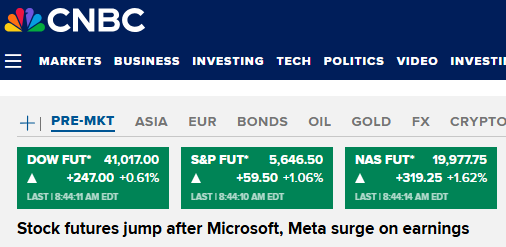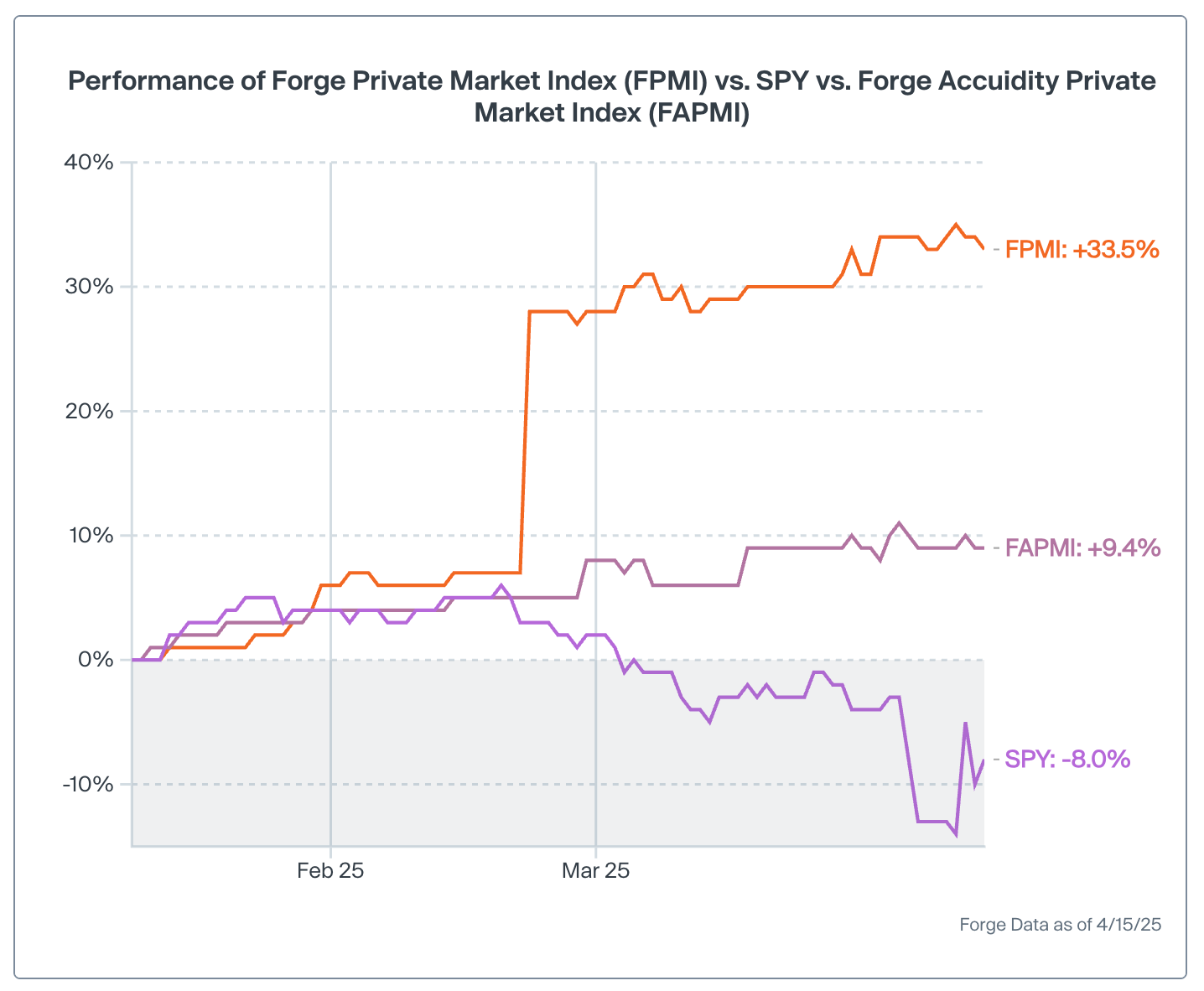#238 IPO Window, Tariffs & AI (Spring 2025)
Spring brought IPO hope, AI capital, and private market gains. Then volatility, tariffs, fear. But now maybe we're back and going up?!
Markets started the spring on a hopeful note—IPOs were trickling in, AI was still riding high, and private trading volumes picked up. But then came volatility, rate jitters, and another round of U.S. tariffs. That optimism? Faded fast. But now are we back and markets back on an upward trend?! Look at the market’s strong signal today and over the past week:
Forge Global’s report (link here to full report) walks through how things shifted—and why it matters if you’re watching for a public market thaw. We dug through the data and pulled out the key themes below.
🌬️ March Started with Promise—Then Turned Cold
The month began with encouraging signals. CoreWeave filed its IPO, AI-driven fundraising was surging, and trading activity picked up across private markets. But by the end of March, public market volatility had reasserted itself—bringing IPO momentum to a halt.
“What seemed like ideal conditions for upward momentum in the private market early in the month, quickly turned volatile at the end of the month.”
That volatility wasn’t just seasonal noise. It broke the usual Q1 IPO rhythm and came just before a fresh wave of U.S. tariffs, announced April 2, that added even more uncertainty.
📉 CoreWeave’s IPO: A Bellwether That Didn’t Ring True
CoreWeave, the first major tech IPO filing of the year, started strong. But as conditions shifted, the company had to walk back expectations—lowering its price range from $47–$55 per share to $40 and slashing the raise from a rumored $4B to $1.5B.
“CoreWeave ended up cutting its pricing […] and reduced the amount raised to $1.5 billion from an initially reported $4 billion.”
After that, the IPO pipeline cooled fast. Well-capitalized companies like Klarna, StubHub, and Chime hit pause, preferring to wait for more favorable pricing—and more receptive public markets.
“The IPO window has been decidedly shut in the near-term and multiple companies delayed their IPOs.”
💰 Private Markets Outperform Again
Despite all this, private markets continued to post strong performance. Forge’s two private market indices both posted positive returns in March—even as the S&P 500 fell nearly 6%.
March 2025 Performance:
This isn't a fluke. Over the past year, FPMI has gained nearly 40%, while public markets have struggled through rate anxiety and geopolitical noise.
“While private market performance held up compared to the public market, the IPO market was hobbled.”
🤖 AI Capital Dominates—No IPO Needed (Yet)
AI continues to drive private capital flows. Since Q4 2024, over 60% of all mid- and late-stage VC funding has gone to AI startups.
“Primary funding in AI companies has constituted over 60% of total funding in mid- and late-stage, VC-backed companies, since Q4 2024.”
With that kind of capital availability—and on founder-friendly terms—there’s little urgency to IPO. These companies don’t need liquidity right now, and they’re not eager to take a valuation haircut in public markets.
In fact, AI may end up being one of the few verticals where companies can afford to be patient. Forge’s data shows strong investor demand, rising trade premiums, and a narrowing bid-ask spread (down to 8% from 12% in February), all of which point to healthy private market dynamics.
🧭 VC Trends: Discipline, Governance, and Growth
Forge’s commentary lines up with broader VC market trends:
Governance readiness is becoming table stakes. VCs want “transaction-ready” companies—those with tight boards, clean compliance, and audit-friendly operations.
AI is still the main event. Up to 35% of all VC dollars could go to AI in 2025, out of a projected $330B U.S. VC market (a 22% jump from 2023).
Exit timing is strategic. With fresh capital, VC-backed companies are choosing to wait for better IPO windows—especially when waiting may mean better pricing and higher proceeds for employees and insiders.
Want to Go Deeper?
If you’re trying to make sense of what this all means for your fund, we’ve created several tools to help you analyze the current environment.
Our VC Toolkit (Premium)
We’ve put together practical templates and models to help funds better understand how changes in the market impact portfolio value, carry, and budgeting. If you’d like access to this template and other premium VC tools and models, feel free to reach out!
Keep reading with a 7-day free trial
Subscribe to @TheFundCFO Newsletter to keep reading this post and get 7 days of free access to the full post archives.








